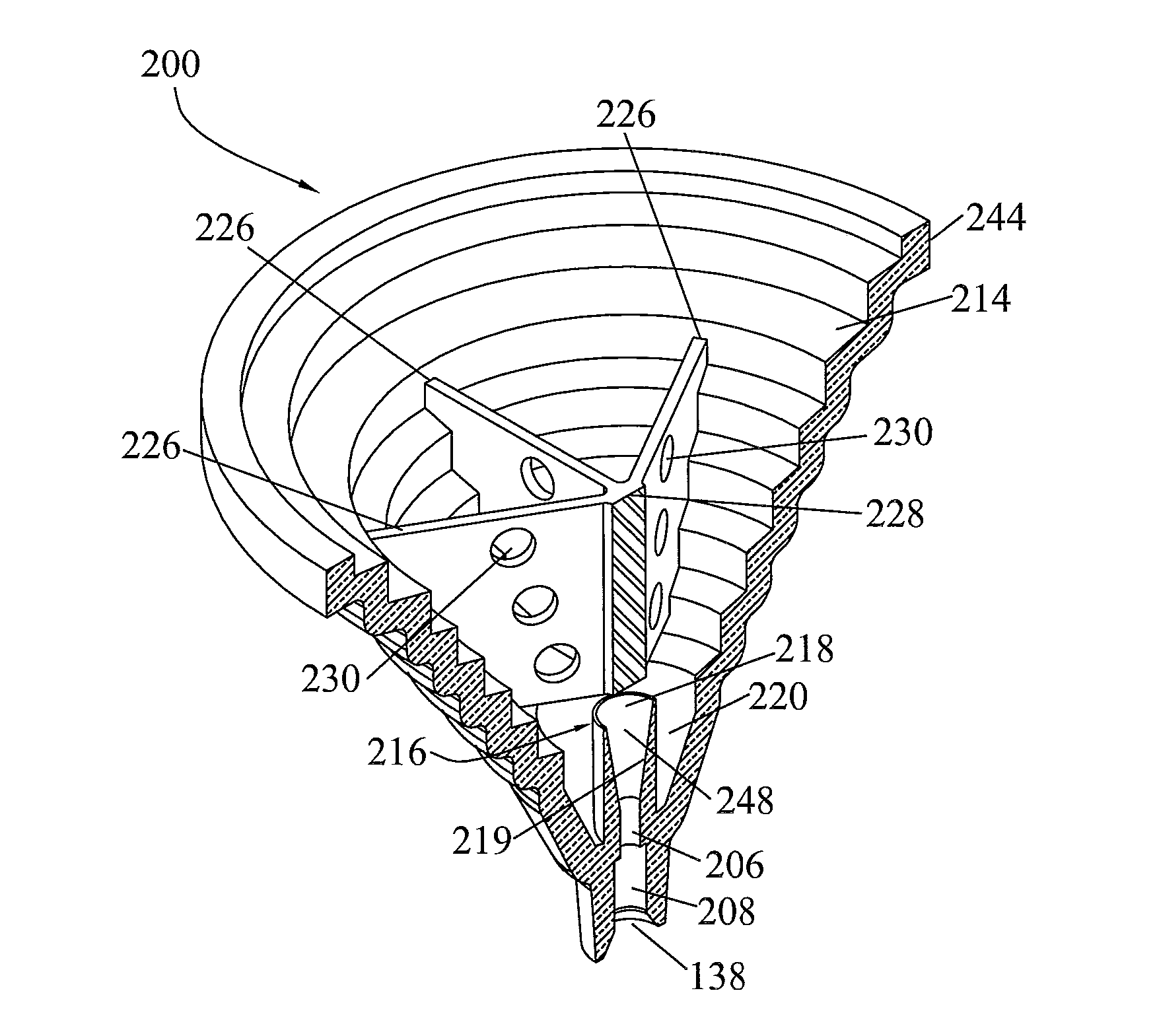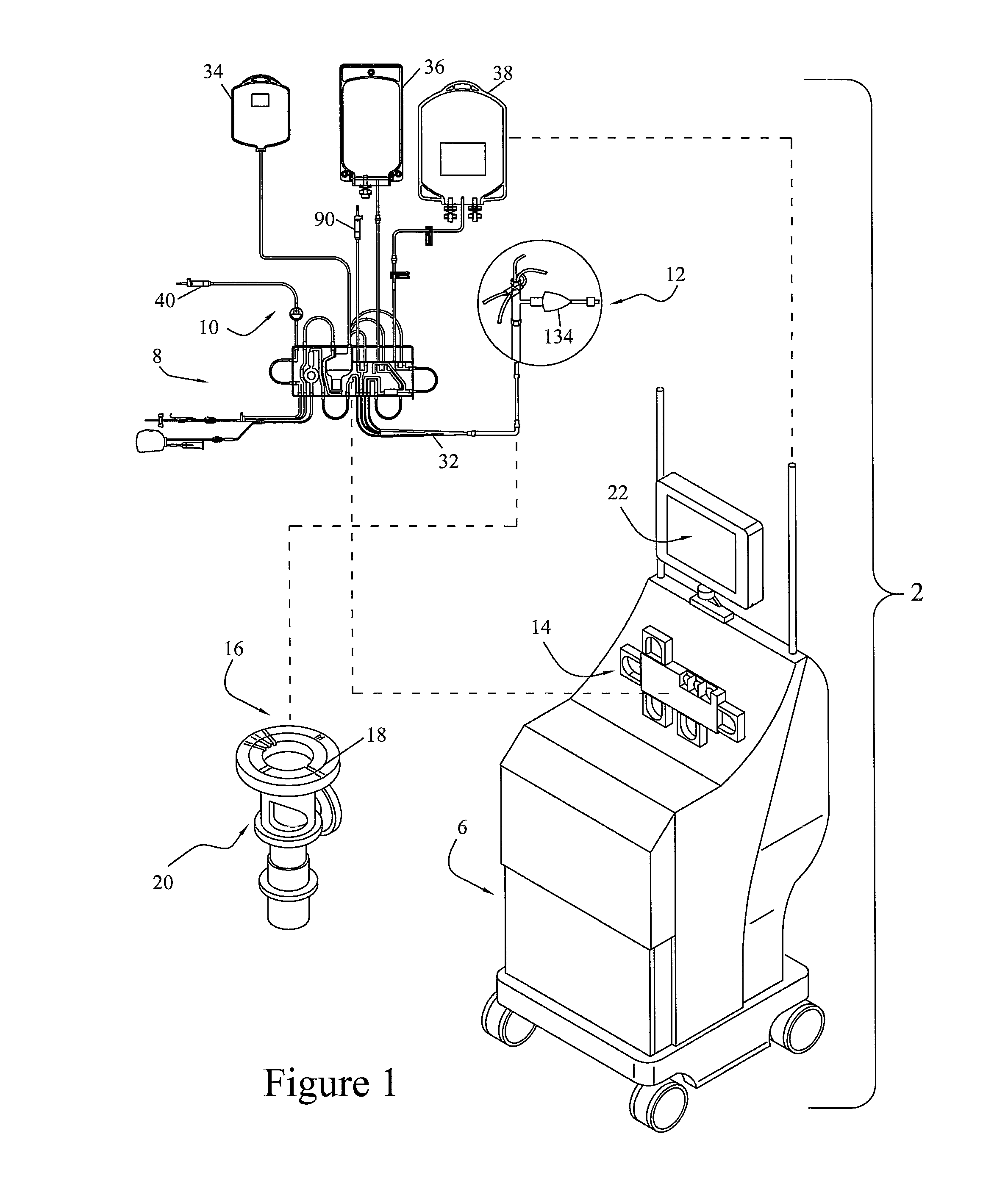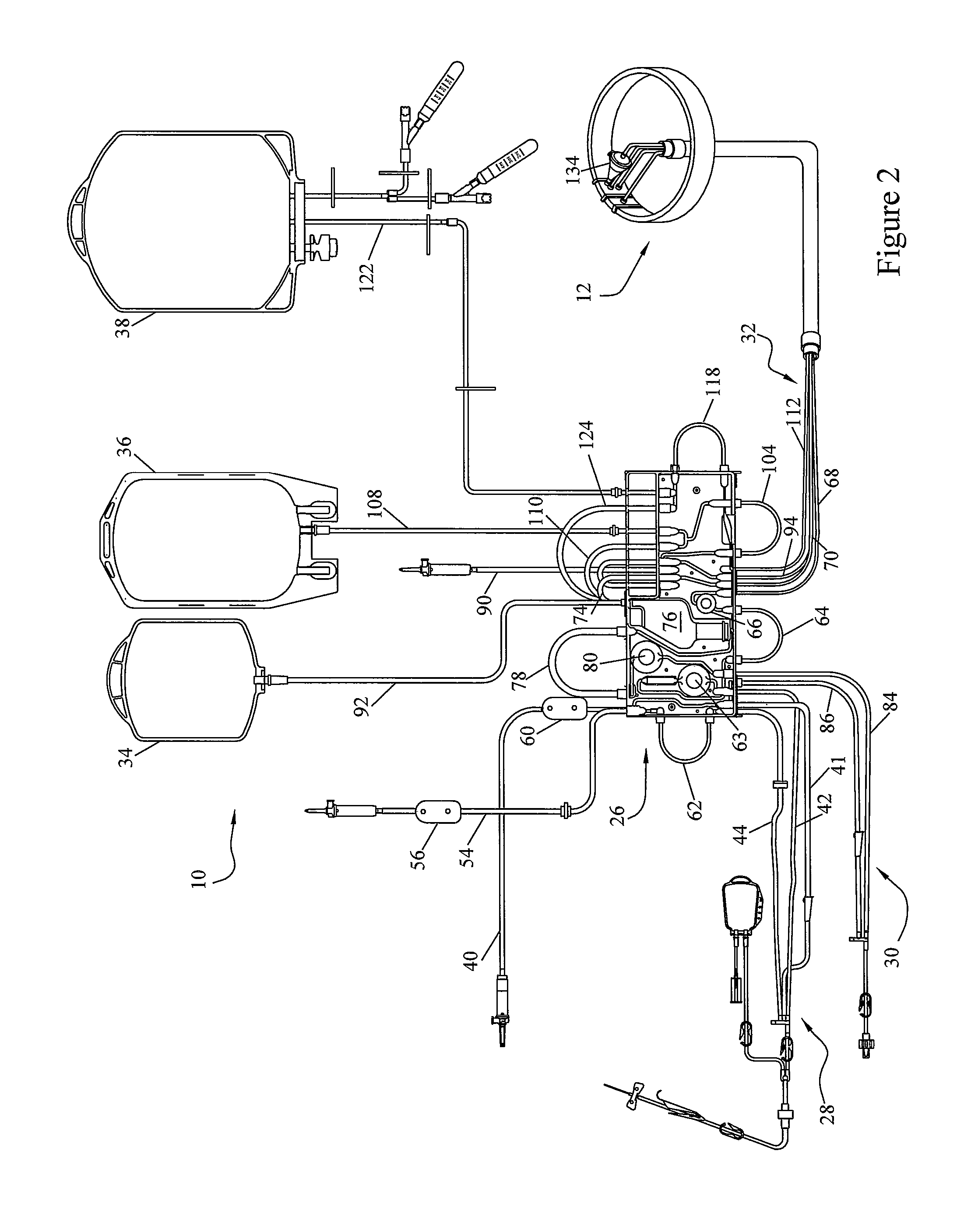Blood processing apparatus with cell separation chamber with baffles
a technology of blood processing apparatus and cell separation chamber, which is applied in the direction of centrifuges, suction devices, rotary centrifuges, etc., can solve the problems of reducing the “platelet viability” of the fluid, introducing its own set of problems, and inefficient use of conventional porous filters
- Summary
- Abstract
- Description
- Claims
- Application Information
AI Technical Summary
Benefits of technology
Problems solved by technology
Method used
Image
Examples
Embodiment Construction
[0028]To describe the present invention, reference will now be made to the accompanying drawings. The present invention may be used with a blood processing apparatus such as a TRIMA® or TRIMA ACCEL® blood component centrifuge manufactured by CaridianBCT, Inc. The invention may also be used with other blood component centrifuges. The Trima or Trima Accel centrifuges incorporate a one-omega / two-omega seal-less tubing connection as disclosed in U.S. Pat. No. 4,425,112 to Ito, and as know in the art to provide a continuous flow of blood to and from the rotor of an operating centrifuge without requiring a rotating seal.
[0029]The present invention comprises an improved leuko-reduction (“LRS”) chamber for removal of white blood cells (“WBC”) from blood components. It is desirable for an LRS chamber to separate greater than 99.99% of entrained WBC from platelet or plasma products obtained by centrifugal apheresis, which is an extremely high value. The process for this separation is based on...
PUM
 Login to View More
Login to View More Abstract
Description
Claims
Application Information
 Login to View More
Login to View More - R&D
- Intellectual Property
- Life Sciences
- Materials
- Tech Scout
- Unparalleled Data Quality
- Higher Quality Content
- 60% Fewer Hallucinations
Browse by: Latest US Patents, China's latest patents, Technical Efficacy Thesaurus, Application Domain, Technology Topic, Popular Technical Reports.
© 2025 PatSnap. All rights reserved.Legal|Privacy policy|Modern Slavery Act Transparency Statement|Sitemap|About US| Contact US: help@patsnap.com



